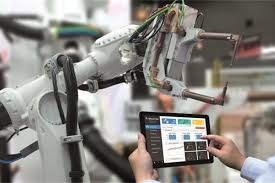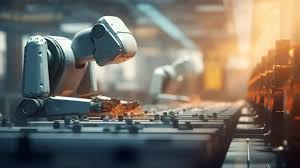In today’s world, the rapid growth of robotics and automation technology is reshaping industries and redefining the future of work. As businesses continue to adopt advanced robotic systems to streamline operations, the workforce faces significant changes. While this technological evolution offers numerous benefits, including enhanced productivity and efficiency, it also raises important questions about the future of employment and the broader impact on the global economy.
In this blog post, we will delve into how robotics is transforming the workforce, its implications on various sectors, and the broader economic consequences. Whether you’re an employee, an employer, or simply someone interested in technology, it’s essential to understand how automation is driving these shifts.
The Role of Robotics in Transforming Industries
Over the last few decades, robotics has revolutionized manufacturing, logistics, healthcare, and other industries. In the manufacturing sector, robotics and automation systems are used to improve production efficiency and precision. Machines are now capable of performing repetitive tasks, such as assembling components, welding, and packaging, with minimal human intervention. These robotic systems are often faster and more accurate than humans, resulting in higher quality products and reduced operational costs.
In healthcare, robotics has enabled groundbreaking advancements, from robotic surgery to automated pharmacy management. Surgeons use robotic-assisted tools to perform intricate procedures with a high degree of accuracy, reducing recovery times and improving patient outcomes. Furthermore, robots in hospitals and clinics help with sterilization, delivering supplies, and assisting with patient care, making healthcare more efficient and effective.
Automation’s Effects on the Workforce: Opportunities and Challenges
While robotics provides significant advantages to businesses, there’s an undeniable impact on the workforce. Many manual labor jobs, particularly in industries like manufacturing and warehousing, are being replaced by robots. However, this shift does not necessarily equate to job loss for workers. The demand for workers skilled in robotics programming, machine maintenance, and system management has increased.
As automation continues to gain momentum, there will be a growing need for professionals who can design, implement, and maintain robotic systems. This shift towards more specialized roles presents opportunities for workers to acquire new skills and transition into tech-driven fields. For example, educational programs and certifications in robotics and automation are becoming more accessible, helping individuals stay relevant in a rapidly changing job market.
At the same time, the displacement of certain jobs raises concerns about income inequality and job security, especially for workers in low-skilled positions. Governments and businesses must work together to ensure that displaced workers have access to retraining and support programs to help them transition into new roles.
How Robotics Is Fueling Economic Growth

Robotics and automation are not only transforming individual industries but also contributing to the broader economy. The integration of robots into production lines and business operations allows companies to reduce costs, improve efficiency, and increase profits. As businesses grow and become more competitive, they can reinvest these profits into innovation, research, and development, which further accelerates economic progress.
Furthermore, the use of robotics is leading to the creation of new industries and job categories that didn’t exist before. The demand for robotic systems, software, and hardware continues to grow, driving innovation in fields like artificial intelligence, machine learning, and data science. This influx of new industries and jobs is creating a more dynamic and diverse economy, paving the way for long-term economic growth.
The Social Impact of Robotics: What’s Next for Society?
Beyond economics and employment, the rise of robotics has profound social implications. For instance, robots are being deployed in public spaces to assist with tasks like cleaning, security, and customer service. Autonomous delivery robots and drones are expected to transform logistics and e-commerce, delivering goods faster and more efficiently.
However, the widespread use of robots in everyday life also raises ethical and societal concerns. For instance, how do we ensure that robots are used in ways that benefit society as a whole? How do we safeguard privacy and security in a world where robots and AI systems are collecting vast amounts of data? Addressing these challenges will require careful regulation and oversight from governments and industry leaders to ensure that robotics is used responsibly and ethically.
The Future of Robotics: What Lies Ahead?
As robotics continues to evolve, we can expect even more transformative changes in both the workforce and the economy. Advancements in AI and machine learning are making robots smarter, allowing them to perform increasingly complex tasks. Autonomous vehicles, for example, are on the verge of revolutionizing the transportation industry, while robots in agriculture are already improving crop yields and reducing labor costs.
The future of robotics is exciting, but it will also require adaptation from both individuals and businesses. To keep up with the changes, workers will need to continuously update their skills, and businesses will need to embrace new technologies that can drive growth and efficiency. Policymakers will also have a critical role to play in ensuring that the benefits of robotics are shared widely across society.
Conclusion: Embracing the Future of Robotics and Automation
In conclusion, robotics and automation are undeniably changing the world as we know it. From reshaping industries to influencing the economy and workforce, these technologies are driving both opportunities and challenges. While some jobs may be displaced, the rise of robotics also creates new possibilities for growth, innovation, and job creation in tech-driven fields.
As we move forward, it’s essential for society to embrace these changes and harness the power of robotics responsibly. By investing in education, supporting displaced workers, and fostering innovation, we can ensure that the future of robotics is one that benefits everyone.
